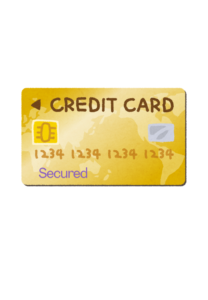Introduction
Your credit score can influence as much as loan approval to making interest on a credit card. Now, a score of 600 puts you in that frustrating gray area—not quite “bad” but far from “good.” This piece uncovers what having a 600 credit score means, the impact it has on your financial options, and how to get out of this mid-tier trap.
Where Does a 600 Credit Score Fall?
Credit scores typically range from 300 to 850, with higher scores representing better creditworthiness. Here’s how a 600 score fits within the broader credit score spectrum:
- 300–579: Bad credit
- 580-669: Fair credit
- 670–739: Good credit
- 740–799: Excellent credit
- 800–850: Outstanding credit
A 600 score falls in the “fair” category but is closer to the low end of the range. This means you could be perceived as a riskier borrower to lenders; your ability to get good loan terms or premium credit cards may be reduced. However, a 600 score also offers some elbow room for improvement and gives you an opportunity to re-establish your credit score.
Why a 600 Score Matters?
A 600 credit score is most likely categorized as a fair or below-average score in the majority of credit scoring models, such as FICO or VantageScore. Although not so drastic, this score will surely disadvantage you in several opportunities regarding the acquisition of loans and credit cards, as well as interest rates that are much friendlier. Here’s a quick comparison of how a 600 credit score can affect your chances of getting a loan, the interest rate, and a credit card:
1. Approvals of Loans
- Less Likely to Get Approved: Many types of loans, such as personal loans, mortgages, and auto loans, have minimum credit score requirements. Therefore, a 600 score may fall below the minimum score that a lender prefers to approve. More likely to get denied or request for more documentation.

- Perception as High Risk: For the lenders, a borrower with a 600 score is perceived as high risk because such a score may indicate that he or she had a history of late payments or was overloaded with debts.
- Fewer Loan Options: For example, in FHA (Federal Housing Administration) mortgages, you will be accommodated with poor credit scores, but conventional loans may not be so provided. In addition, you can use a part of all of the cosigners or collateral to raise the approval chances.
2. Interest Rates
- Higher Interest Rates: A 600 credit score is usually coupled with much higher interest rates because the lender has to compensate for the perceived risk in lending.
For example:
- Mortgage Rates: A 600 scorer may be quoted 1-2% higher than a 700+ scorer. This may mean tens of thousands of dollars more in interest over the life of the mortgage.
Auto Loans: You would be able to see interest rates going up to 10-15% or even higher. A pristine credit history brings that person the lowest possible interest rate of less than 5%.

- Larger Monthly Payments: Higher interest rates mean that the monthly payments on loans will be higher and involve a cost of borrowing that is much more significant.
3. Credit Card Eligibility
- Fewer Quality Alternatives: A 600 credit score will most likely rule you out from qualifying for some of the best credit cards, which offer travel credit, large lines of credit, and more.
Secured or Bad Credit Cards: You will qualify for:
- Secured credit cards—credit cards that require an upfront deposit.

- Store credit cards—these have a relatively good approval rating, but then charge more.
- Subprime credit cards—these come with a higher fee, and the lines of credit are limited to a certain amount.
Higher APRs and Fees: Credit cards you qualify for will have higher APRs, normally above 25%, and there may be annual fees that increase the cost of using credit.
Is a 600 credit score good, bad, or in the middle?
A credit score of 600 is neither good nor bad—it’s kind of just in the in the middle of the road. Here’s how that shakes out:
Bad:
- You will likely be charged high interest rates on loans and credit cards.
- You may not be approved for unsecured credit cards or other premium financial products.
- You could be denied loans, apartments, or utility services.
Good:
- Some providers take loans at $600, but in less preferable conditions.
- Credit improvement chances become possible with good practices.
- A score of 600 is closer to recovery than “poor” scores.
The Middle:
- You may be eligible for financial products, but not at the best available conditions.
- It might be possible to get trapped without knowing any direction on the next way to be taken.
Common Reasons for Being Stuck at a 600 Score
Generally, there are many factors that leave an individual dangling in limbo, stuck at a credit score of 600. Here are some of the most common reasons why people get stuck there.
- High Credit Utilization: The score suffers if you use more than 30 percent of your credit limit.
- Late Payments: The lousy habit of one late payment leaves a permanent mark.
- Limited Credit History: If your credit history is short or thin, you don’t have enough data for lenders to even find out your creditworthiness level.
- Collection Accounts or Charge-Offs: These negatives can even damage your credit score for many years.
- Too Many Hard Questions: Applying for more than several credit products in a short space of time can make you appear desperate for credit.
Tips to Improve a 600 Credit Score
It takes time to get out of the 600-range and into the “good” credit territory (670+), but habits are what will make this improvement possible. Here are five actionable tips to improve your score:
- Pay Bills on Time, Every Time: Your payment history accounts for 35% of your credit score. Make it automatic so that you never have to worry about missing a due date.
- Reduce Credit Utilization: Pay down high balances first. Keep card balances under 30% of the total credit limit.
- Dispute Errors on Your Credit Report: Check for errors in your report. Look for incorrect information regarding payments that have been made late or unknown accounts and dispute them with the credit bureaus.
- Consider a Secured Credit Card: A secured card requires a deposit but reports to the credit bureaus like a regular credit card. It’s a good tool to build or rebuild credit.
- Use a credit-building loan or become an authorized user: A credit-builder loan allows you to increase your score while also putting money in the bank. Or you can ask a family member to add you as an authorized user on their credit card.
How long will it take to improve a 600 score?
A 600 might take some time to correct, depending on the severity of those adverse accounts. But even with missed payments, one or two can still recover and provide on-time payments. Those can take 6 to 12 months to improve the score. Severe issues such as collections or charge-offs may take responsible credit behaviour from 18 to 24 months for notable improvements.
What’s Next After 600?
Once you’re over 600, your assignment is to determine very realistic credit goals and how you can get on your way toward a “good” credit score, that is, 670 or better. A better score will open you up to better financial products, lower interest rates, and higher credit limits. Let’s discuss the steps you can take strategically to improve your score and what rewards you can expect at each stage.
1. Set Realistic Milestones for Credit Growth
Credit score enhancement happens over time and by incremental moves. Here is one such roadmap along with workable targets:
Short-term goal:
- Obtain 670+ in six months
- Assume ‘fair’ from ‘poor’ ranking on the credit rating scale, and you can get loans without much friction.
- Reduce credit card debt, pay on time, and contest any errors.
Medium-term goal:
- This is “good” credit and more choices with fair interest.
- Continue to manage utilization, avoid late payments, and lessen hard inquiries
Long-term goal:
- A score within this range allows access to prime loans and credit cards with rewards. Much better terms on a mortgage or a car loan are also possible.
- Long-term healthy habits must be maintained, accounts kept open, and slowly build the length of the credit.
Conclusion: Do Not Settle for a 600 Score
A 600 credit score is not terrible, but it narrows you down a lot when attempting to gain better financial opportunities. The bright side, however, is that if you will utilize the right methods—such as debt paydown, paying bills on time, and disputing errors—you are sure to develop credit over time. Though you may be middle ground for now, getting to “good” to “excellent” credit is possible from “fair”.
The trick is to be consistent in good behaviors and not slip on slippery slopes like late payments or credit inquiries. With a little patience and discipline, the 600 score is nothing but a memory, and the financial benefits of good credit are another story altogether.
FAQs
Q. Can I qualify for a credit card with a 600 credit score?
Yes, you can get a credit card. However, your options may be limited to the following:
- Secured cards: They use cash as a guarantor.
- Subprime cards: They are expensive to operate and carry low limits.
- Retail credit cards: Although a bit easier to get approved with, they come with relatively higher interest rates.
Q. Can I rent an apartment with a 600 credit score?
- It will be slightly harder, but you’ll likely still find an apartment. Landlords typically will check scores and may require a higher security deposit or a cosigner with a score such as 600.
Q. How can I follow my credit score?
There are many tools available that will allow you to track your credit score for free using:
- Credit Karma
- Experian
- Credit Sesame
These services enable you to view your credit score, notify you of something significant happening on your report, and assist in getting you specific guidance on how to improve.
Q. Do I need a 600 credit score for good employment?
- In some cases, yes. Some do check credit reports when hiring, usually only for positions that involve money. Having a low score might concern the employer about your being reliable financially.



Pingback: Top 10 Financial Goals for 2025 - Paisewaise
Pingback: 7 Ways to Eliminate Credit Card Debt Faster - Paisewaise
Pingback: Does Student Loan Affect Credit Score? - Paisewaise
You’ve addressed all the possible concerns someone might have about this subject.
The post is extremely stimulating. I enjoyed reading it. Thanks for writing.
Pingback: What Credit Score Do You Need for a Bridgecrest Auto Loan? (2025 Update) - Paisewaise